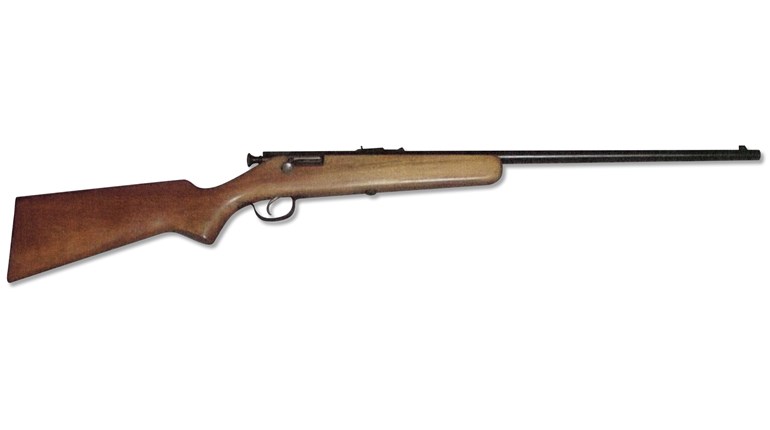
Each year, thousands of citizens invest in the formal training offered at any number of professional firearms schools and academies to learn from those with the knowledge, experience and expertise to provide something they can't get at home. Planning a trip to a shooting school is a big deal. You must block out the time in vacation days and from a monetary standpoint, you have to factor the price of tuition, travel, lodging, ammunition and meals.
With all these things in mind, you want to make sure you are getting the most out of your experience. Showing up without the proper gear, poorly made equipment and/or no foul-weather clothing is a recipe for disaster.
It doesn't matter how tough you perceive yourself to be, if you are cold, wet and have sore feet, your attention isn't going to be on learning. Starting from the ground up, ensure you have comfortable, well-fitting boots or shoes. Better yet, pack two comfortable, well-made pairs of footwear you can use on the range.
Head to Toe
All training schools I know operate rain or shine. Unless there is severe weather or lightning, you can expect outdoor training. If your boots get soaked the first day, they aren't likely to be dry by the next morning when you need them again. Believe me, you don't want to start the day by putting your feet into wet boots.
Along the same lines, pack quality socks—one or two pairs more than what you think you'll need. They weigh next to nothing, but are invaluable if you need them. Ditto for T-shirts.

Regarding weather, take the time to research the average temperature and weather forecast for the area where you will be traveling. Think layers. Cold mornings in the high desert quickly give way to hot afternoons. Conversely, a sunny morning in the Midwest can easily become a rainy afternoon. You'll never regret taking a quality rain jacket with an insulated liner. However, it's easy to regret forgetting to do so.
As far as normal classroom and range wear, long pants and long-sleeve shirts are the way to go. Brass will be flying, and that stuff is hot so it's not fun when it lands on bare skin. Kneepads are another investment you will appreciate if your class is more dynamic than simple marksmanship training.
Read the List
I know most men are visual, hands-on learners and don't ask for directions, but do yourself a favor, read the recommended gear list. Most every school has a detailed, suggested packing list. They do this for a living, so take their advice. They know what you should bring.
Regarding the style of holster you need to bring, it is very important to follow the school's guidelines. Most professional shooting academies do not allow shoulder holsters and cross-draw rigs on their ranges. If the school recommends at least three magazines for your pistol, don't try to short them and bring one or two. There is a method to their madness. Stuff breaks—you are better off having extra than not enough.

Regarding gear, especially magazines, take the time to mark them before you leave. Every Glock 17 or Beretta 92 magazine looks the same. Sharpie markers and paint pens are fantastic for marking your stuff. Trust me, at some point you'll drop, misplace or forget something. If your name is on it, chances are good you will get it back.
It should go without saying, but ensure you have the correct safety gear—wraparound shooting glasses and protective earmuffs. If you have the means, spend the extra money for electronic hearing protection. These cut down on some of the frustration from not being able to hear the teacher and having to constantly remove the earmuffs to listen to instruction.
Physical Fitness
Few privately run shooting courses will rival Marine Recon indoctrination. Nevertheless, expect to exert yourself some. At the very least, you'll be spending a lot of time on your feet. If you have a genuine physical infirmity, your instructors will work with you, but soft and out of shape is not a legitimate handicap.
You should have plenty of lead time before the course. If you haven't gotten any exercise lately, this might be good time to start. Remember, you are investing in yourself. You aren't doing it for the instructors or your peers. I'm not telling you to prep for a marathon, but you should be able to make it to lunch without a nap.
Attitude
I have deliberately saved this subject for last, not because it is of least importance—just the opposite. Regardless of the guns and gear with which you are equipped, your attitude is the most critical factor in determining how much you will get out of a training course.

I asked several of the nation's top firearms trainers what one piece of advice they would give shooters readying themselves for school. To a man, they all replied a student's attitude when they arrive was the most important factor. Gear issues and bumps and bruises can be overcome with a positive attitude.
Dave Starin, training administrator for Gunsite Academy responded, "Improper gear or clothing can lead to mental distraction and even breakdown. On the other side of that coin is the misconception that different gear or clothing will solve unrelated problems such as improper trigger control or sight alignment. However, these two areas are usually the easiest to remedy…[m]ental preparedness or mindset can enable students to overcome the gear, improper clothes and physical limitations."
John Benner, owner of Tactical Defense Institute, summarized why arriving at training with on open mind is important. "Mental is the most important," he said. "We rarely have an issue, but people need to go to a class with an open mind and try their best to do as the instructor asks, obviously as long as it is safe. It is an individual's choice what methods and techniques they adopt, but when you go to someone's class, you have chosen to do that for a reason. Try what they are teaching. I never want anyone to feel they can't ask why, although we always try to explain that ahead of time."
While speaking with James Yeager, owner of Tactical Response, he said, "One thing we respectfully ask all of our incoming students to do is read 'Principles of Personal Defense' by Jeff Cooper. We stress the hierarchy of mindset, tactics, skill and gear at Tactical Response and the book helps them get into that frame of mind. I also tell them that practice and training are not interchangeable terms. Training teaches you what and how to practice. When a student leaves our school they will have the tools to return home and practice what they've been taught until they are ingrained."
Every Journey Begins…

For those outside of the military or law enforcement realms, planning a trip to a professional firearms academy is a bit of an adventure. You are getting out of your "pond" and leaving your personal comfort zone—that is a good thing. It's nearly impossible to grow or improve in any area of endeavor without professional guidance, or at least honest peer critique.
The best firearms instructors in the nation are those who constantly travel to schools other than their own. Retired M/Sgt. Paul Howe, who owns CSAT, a school in Texas, recently wrote, "Training, like selection, is a never-ending process. We begin learning on day one of our life."
Whether you are planning a weekend or a week at a professional training course, you will be well served to take the time to prepare your mind, body and kit bag. Never kid yourself by thinking "I'll just pick up 'x' when I get there." Referring back to my Marine Corps days, you should be ready to go as soon as your boots hit the ground.






































